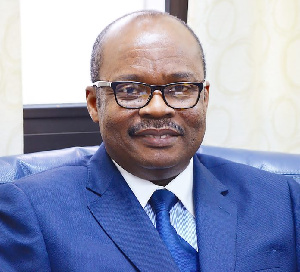 Governor of the Bank of Ghana, Dr. Ernest Addison
Governor of the Bank of Ghana, Dr. Ernest Addison
Governor of the Bank of Ghana (BoG) Dr. Ernest Addison has said global financing conditions have tightened somewhat as prospects of strong growth and higher inflation expectations pushed up borrowing costs in advanced economies.
However, he said, the continued pursuit of accommodative monetary policy by major central banks has moderated sovereign and corporate bond spreads and so far, contained capital flow reversals, and supported the rebound in equity markets and higher portfolio flows to emerging market economies.
“In broad terms, financing conditions remain favorable and supportive of the recovery process,” he said while announcing the the policy rate at a press conference. The rate is 13.5%.
Dr. Addison further stated that since the beginning of the year, headline inflation in several advanced and emerging market economies have picked up sharply above targets, driven mainly by energy price pressures, and supply constraints amidst increased consumer demand as economies re-open.
However, the expectation is that over the medium-term, headline inflation will return to target, moderated by the still sizeable spare capacity, slack in labour market conditions and restrained wage growth. In emerging market and frontier economies, the pace of price movements would be dictated by currency movements and Covid-related supply-side constraints.
These developments regarding the recovery in global growth conditions, tightening of global financing conditions, and rising global inflation trends are likely to work together and exert some spill over impulses to the Ghanaian economy.
In the domestic economy, the Ghana Statistical Service, reported an estimated GDP growth of 3.1 percent for the first quarter of 2021, yet another sign of strong recovery from the impact of the pandemic, even though still lower than the pre-pandemic growth of 7.0 percent recorded for the first quarter of 2020. Non-oil GDP grew at 4.6 percent, from 7.9 percent growth in the same comparative period.
Beyond the first quarter GDP outturn, high frequency economic indicators for the second quarter of the year point to a sharp pickup in economic activity relative to last year.
The Bank’s updated Composite Index of Economic Activity (CIEA) recorded a strong annual growth of 33.1 percent in May 2021, relative to the contraction of 10.2 percent recorded in the corresponding period of 2020.
The sharp increase broadly reflects some base-drift effects as well as improvement in industrial production activities, domestic consumption, pick up in import activities, steady rise in construction activities and a rise in air-passenger arrivals, during the period.